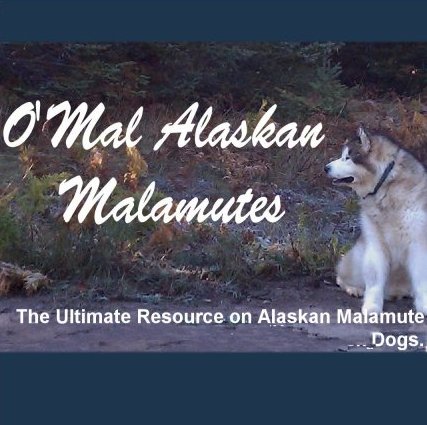Behavior Modification
The techniques used most commonly to modify dog behavior include habituation, extinction, counterconditioning, desensitization, response substitution, and shaping.
A behavior modification technique called flooding, described below, is not used very often because it is more likely to make animals worse, this is a technique used by Cesar Milan, which we don't recommend. Some claim that punishment is frequently used with success, but few people use punishment correctly. If punishment is to be successful, it must occur at the beginning of the behavior, be consistently delivered, and be strong enough to stop the unwanted behavior. This would include yelling at the dog or giving a shock through a collar for example. Most punishments are not given at the right time or are not appropriate for the situation. "Dominance" training techniques that encourage owners to assert leadership through physical confrontations are also not recommended - they can get you bitten! Multiple studies have shown that training based on punishments or confrontations are more likely to lead to fear, avoidance, and increased aggression. Dogs trained with rewards have fewer behavioral problems and are less fearful and positive reinforcement is the ONLY way to shape the behavior of a shy or fearful dog without making the problem worse.
The best types of behavior modification used for dogs.
Habituation is a simple form of learning that involves no rewards. It is merely the ending of or decrease in a response to a situation that results from repeated or prolonged exposure to that situation. A dog that habituates to one type of sound does not, automatically become habituated to other sounds. A dog that gets used to gunshots is not necessarily habituated to thunder, for example. Habituation is not the same as failing to respond to stimulation as a result of fatigue, sensory adaptation, or injury. Habituation responses are generally long lasting, unless an animal is repeatedly exposed to a potentially harmful situation (such as a predator) without being harmed, habituation does not generally occur. Scientists believe that responses to dangerous stimuli may have an inherited resistance to habituation. If the fearful response is too intense, the dog may become more fearful instead of adjusting to the situation.
Spontaneous recovery. If there is a long period of time between when a dog has experienced an event to which it had become habituated, and re-exposure to the same event, the dog may again react. For example, a puppy barks to get a reaction. The more the owner attempts to quiet it, the more the puppy barks. It will continue this pattern because it is getting the attention it wanted. “Negative attention" can also be rewarding if there is little positive attention. The best method to discourage the behavior is to ignore it. Eventually the puppy stops barking if the owner consistently ignores it. However, when the bad behavior comes back every now and then it is called spontaneous recovery.
Conditioning refers to associations between stimuli and behavior. We've all heard of Pavlov's dogs that would salivate at the ring of a bell....the hungry dog drools (the behavior) when it sees food (the stimulus). After this, every time that the hungry dog sees the food a bell is rung (a second stimulus). Once the food and bell have been paired several times, the dog will drool even if it just hears the bell. This is called conditioning. The bell generates the same response as the sight of food. After several times, the dog has learned to associate the bell with the food. Conditioning can be positive or negative. For example, the sound of a doorbell can cause fear or excitement in a dog, depending on whether the dog likes or dislikes visitors.
Reinforcement is any event that increases the chances that a certain behavior will be repeated. Reinforcements can be positive or negative. When positive reinforcement (a reward) is used in training, there is a positive relationship between the behavior and its consequences. The more the pet does a behavior, the more it gets the reward. This makes that behavior increase. A negative reinforcement is something unpleasant that increases a behavior when it is removed. Being held tightly may be unpleasant to a squirming puppy. But the hold is released only when the puppy calms down. After several times, the release from restraint will increase the chance that the puppy will relax faster.
Second-order reinforcers are signals that can be used at a distance to let the dog know that a reward is coming. Commonly used second-order reinforcers are words, such as “good girl," hand signals, and clickers. By carefully pairing these with a primary reward (such as food or petting), second-order reinforcers can elicit the same response that the reward would. For example, a clicker can be associated with patting on the head as a reward for sitting and staying. By associating the clicker with a reward, you can train the dog to sit and stay from farther away and still reward the behavior by using the clicker. Positive training and clicker training have become very popular but it is possible to do an excellent job without using any second-order reinforcers. Clicker training requires much practice and excellent timing. In some situations involving problem behaviors, the incorrect use of a clicker may hinder, rather than help.
Extinction is a response that stops when a reward is removed. A classic example of extinction involves a dog that jumps up on people for attention. If people pet the dog, the behavior continues. If they stop petting the dog, the dog will eventually stop jumping because the reward is no longer there. However, even occasional petting of the dog in response to its jumping will reinforce the pattern. In fact, random reinforcement is probably the most potent reinforcement of all. Resistance to extinction can also occur even without reinforcement if the reward was good enough and was tightly linked to the behavior.
There is often an association between getting the reward and the intensity of the behavior, the intensity or frequency of the behavior you are trying to eliminate usually increases at the beginning of extinction. In other words, a behavior you are trying to get rid of will get worse before it gets better. This is where most inexperienced trainers fail. It is critical that you do not give in. Giving in will only make extinction more difficult. The dog will learn that, although your threshold has increased, the dog can override it by working harder.
Over learning is the repeated performance of an already learned behavior. This technique can be extremely useful in teaching a dog to overcome a fear or anxiety. It is often used in training for specific events, and may also be useful for preventing fearful responses in dogs. Over learning accomplishes 3 things: it delays forgetting, it increases the resistance to extinction, and it increases the chance that the behavior will become an automatic response even in stressful situations.
Shaping is a learning technique that works well for dogs that do not know what response is desired by the trainer. Shaping works through gradual approximations and allows the dog to be rewarded initially for any behavior that resembles the desired behavior. For example, when teaching a puppy to sit, giving the puppy a food treat for squatting will increase the chance that squatting will be repeated. This squatting behavior is then rewarded only when it becomes more exaggerated, and finally, when it becomes a true sit.
Desensitization is a way to gradually teach a dog to tolerate a situation by carefully exposing it to that situation in very small steps. If a puppy gets overexcited at the sound of the doorbell, a tape recording of the doorbell could help stop the undesirable behavior. If the tape is played very softly at first and then only gradually increased in volume as long as the puppy remains calm, then the puppy may stop reacting to the doorbell. It must be noted however, to proceed slowly when using this technique or you could produce anxiety (and make the problem worse) through 'flooding'.Flooding is prolonged exposure to a stimulus until the dog eventually stops reacting. This is the opposite of the approach taken in desensitization. It is far more stressful than any of the other treatment strategies and if not used correctly will make things worse. The most common problem is increased fear. This technique should be used only by a professional and only as a last resort.
Counter conditioning is a method for reducing unwanted behavior by teaching the dog to replace it with another more favorable behavior. An example would be a dog that is aggressive to other dogs out on a walk. Instead you ask the dog to sit at the first sight of another dog and reward it. The dog then associates sitting with seeing another dog, and by association considers it a pleasant experience because it gets a treat. Once this behavior is learned, the dog is exposed to dogs closer and closer. If at any time the dog takes too much notice of the other dogs, you extend the distance until the dog relaxes. Relaxing is the key and is the first step to changing the behavior. Counter conditioning and desensitization can take a lot of time and effort. The exercises must be frequently repeated so that the unwanted behavior decreases until it is no longer a problem.
Punishment is also called aversive conditioning. It is any unpleasant event that lowers the chance that a behavior will be repeated. Punishment can be positive or negative. Positive punishment refers to applying something unpleasant to decrease a behavior, whereas negative punishment refers to removing something positive to decrease a behavior. Punishment must occur as early as possible (within a few seconds of the start of the behavior), and it must be consistent and appropriate and not excessive. Critical factors in punishment include timing, consistency, appropriate intensity, and the presence of a reward after the undesirable behavior ends. Most people, once they get the desired behavior, forget to reward. Punishment is never an easy fix and has a high chance of failure. It can also lead to other negative consequences, such as increasing fear or aggression.
Response substitution involves the replacement of an undesirable response with a desired one. An example is teaching a dog to lay down instead of jumping up. Owners should begin in a calm environment where success is likely, then progress to places with more distractions as the behavior is learned. Dogs may first need to be desensitized to the stimuli for response substitution to be successful.























